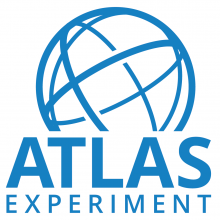Access to Collaboration Site and Physics Results
ATLAS Collaboration
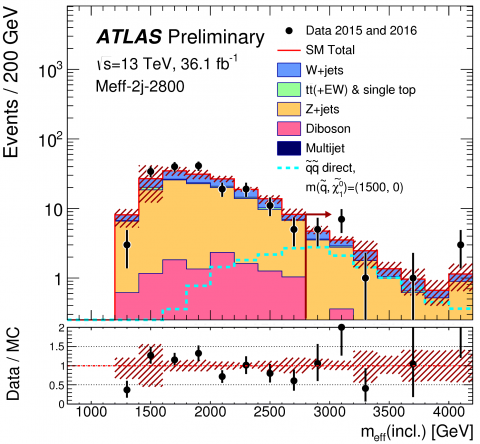
The search for super-particles continues!
Many of the most important unanswered questions in fundamental physics are related to mass. Why do elementary particles, which we have observed and measured at CERN and other laboratories, have the masses they do? And why are they so different, with the mass of the top quark more than three hundred thousand times that of the electron? The presence of dark matter in our universe is inferred because of its mass but, if it is a particle, what is it? While the Standard Model has been a tremendously successful theory in describing the interactions of sub-atomic particles, we must look to even larger masses in search of answers and, potentially, new supersymmetric particles
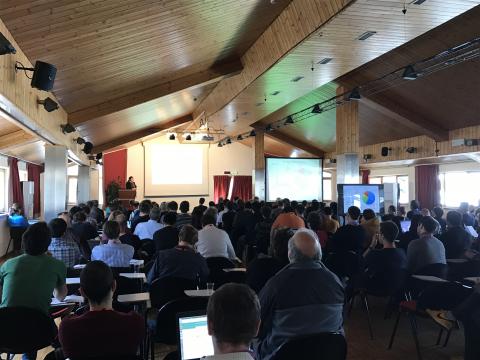
ATLAS to present new results at Moriond
Every March for the past 50 years, particles physicists have been heading to the mountains. The terminus of this migration? Les Rencontres de Moriond, one of the year’s first major conference for high-energy physics.
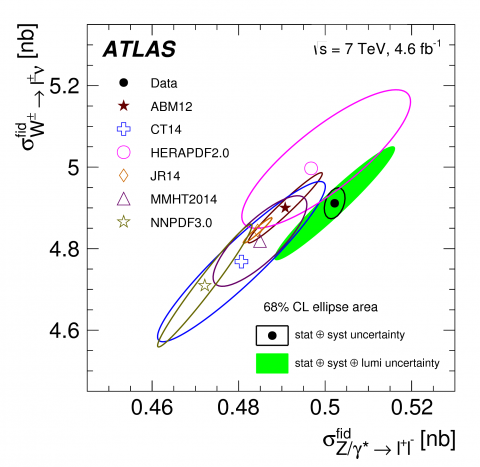
How strange is the proton?
What precision measurement of the inclusive W+, W− and Z/γ∗ production cross sections can tell us about the true nature of the proton.
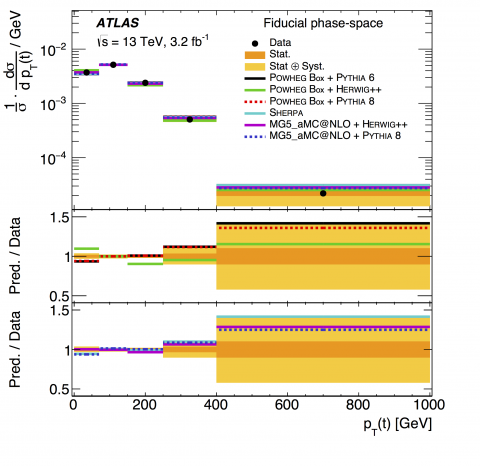
Return of the top quark!
For the first time, ATLAS has measured the kinematics of the top quark and of the tt̅ system in 13 TeV events containing two charged leptons, two neutrinos and two jets (called “dilepton” events).
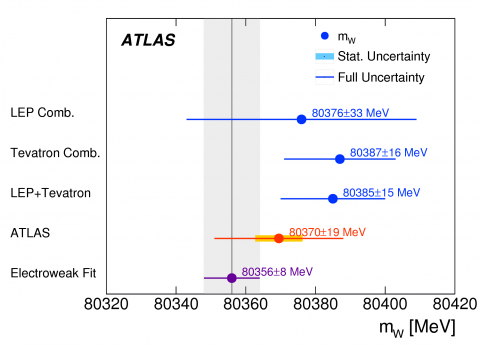
Measuring the W boson mass
The ATLAS collaboration is now reporting the first measurement of the W mass using LHC proton-proton collisions data at a centre-of-mass energy at 7 TeV. The ATLAS result matches the best single-experiment measurement of the W mass performed by the CDF collaboration.
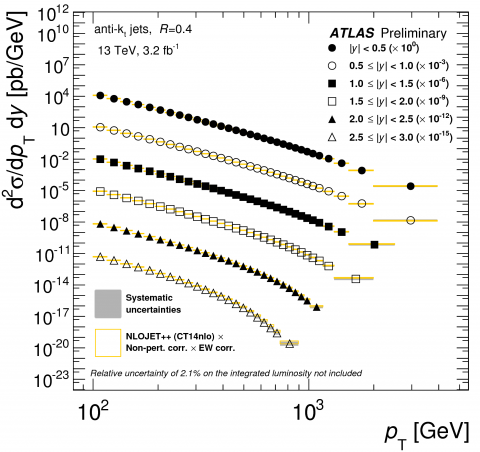
Precision measurements with multi-TeV energy jets
The strong force is one of the four fundamental interactions of Nature. It governs the interactions between quarks and gluons, and is thus responsible for the stability of ordinary matter. In the proton-proton collisions at the Large Hadron Collider, the strong force is seen in the production of collimated sprays of mesons and baryons, known as hadron jets. The ATLAS Collaboration has released the measurement of the inclusive jet production cross sections at the new 13 TeV energy frontier.
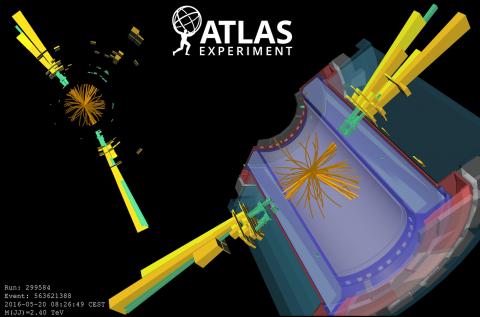
Hunting for new physics with boosted bosons
The Standard Model is a tremendously successful theory that describes our best understanding of elementary particles and their interactions, and even predicted the existence of the Higgs Boson. It does not however explain ~95% of the known universe – including dark matter and dDark energy – and does not include a description of gravity.
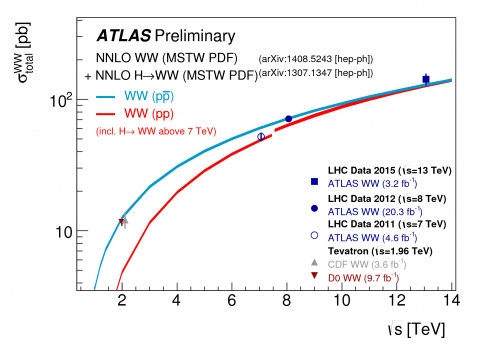
Double the bosons, double the excitement
ATLAS has performed measurements of boson-pair production using data from 13 TeV proton-proton collisions that began in 2015. The cross-section (a measure of the production frequency) of the WW boson pair production was measured and was compared to a previous measurement in 8 TeV collisions.

High-mass di-photon resonances: the first 2016 ATLAS results
One of the highlights of last year’s physics results was the appearance of an excess in the search for a new particle decaying into two photons ("the di-photon channel"). New results in this channel were presented at the ICHEP conference in Chicago on Friday, 5 August.
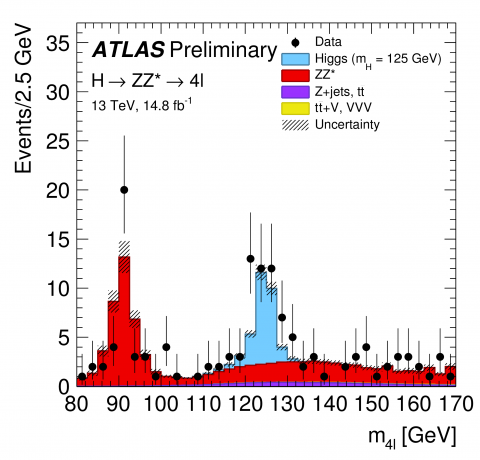
ATLAS observes the Higgs boson with Run 2 data
The LHC’s jump in energy to 13 TeV in Run 2, together with the copious amount of collisions delivered over the last 12 months, has allowed the ATLAS experiment to collect a data sample that is more than equivalent to the one collected during Run 1.


